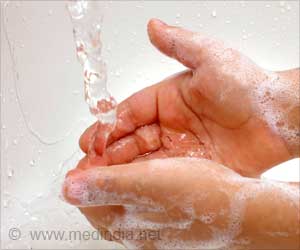“Appropriate and consistent hand washing is critical to reduce the spread of HAIs, but it has been notoriously challenging, costly, and time-intensive to increase and sustain best practices among both hospital staff and the general public,” said Lily Ackermann, MD, ScM, FACP, Thomas Jefferson University Hospital, and the paper’s lead author. “This study suggests that automated video engagement could offer an effective new approach to improve hand-washing duration.”
Good hand hygiene – including hand washing – is the simplest and most effective method to prevent HAIs. Effective hand washing involves both the washer’s technique and the duration of their wash.
The U.S. Centers for Disease Control and Prevention (CDC) recommends that all individuals, whether in a healthcare setting or the general public, wash hands for a minimum duration of 20 seconds. Previous research and clinical evidence have shown that compliance with this and other hand-washing guidelines is generally low.
The study conducted by Dr. Ackermann and her colleagues assessed whether an automated, smart video engagement system could increase the number of individuals who meet the recommended 20-second hand-washing duration, as well as whether hand washers eventually became fatigued with the intervention.
The researchers developed an innovative system comprising smart, connected, hand-soap and towel dispensers synched to a computer that was programmed to display a rotating set of 20-second-long creative videos.
The system began playing the video on a display screen above the sink and timing the hand-washing duration when a user first dispensed soap onto their hands, and then stopped both the video and timing when the same user dispensed a towel to dry their hands.
Researchers installed and piloted two of the systems in staff bathrooms of a non-clinical hospital location and captured data for three defined periods: a control period of 3 weeks (during which no video played), followed by an “impact-video” period of 9 months, and then a “sustain-video” period of 17 months.
Findings suggest that video intervention significantly increased mean hand-washing duration and the number of users who achieved the recommended 20 seconds of hand washing as compared to the control.
During the “impact-video” and “sustain-video” periods, mean seconds of hand washing increased by 7.5 and 4.4 seconds, respectively, as compared to control (21.9 seconds, 18.6 seconds and 14.4 seconds; p 20 seconds in the control group, 61.1% in the “impact” group and 41% in the “sustain” group achieved this duration, representing increases of 39% and 19.2% in the two video groups (p
Researchers determined that hand-washing duration decreased from the mean by 0.5 seconds per month during the “impact” period and 0.1 seconds each month in the “impact” period.
The greatest number of users achieved the targeted >20 seconds of hand washing at month 1 of the “impact” period followed by a 22% decrease at month 3 and then decline to a new steady state of 45% below the peak at month 11.
The researchers suggest that the decline in hand-washing engagement could be attributed to creative and message fatigue, and suggest that video content should be refreshed every 3 months to help sustain engagement and hand-washing improvements.
“This study and its findings are exciting, because they suggest a viable new approach for addressing a fairly intractable healthcare problem,” said Linda Dickey, RN, MPH, CIC, FAPIC, and 2022 APIC president. “Solutions that meaningfully improve and sustain good hand hygiene will reduce infections, save money and save lives.”
Source: Eurekalert



